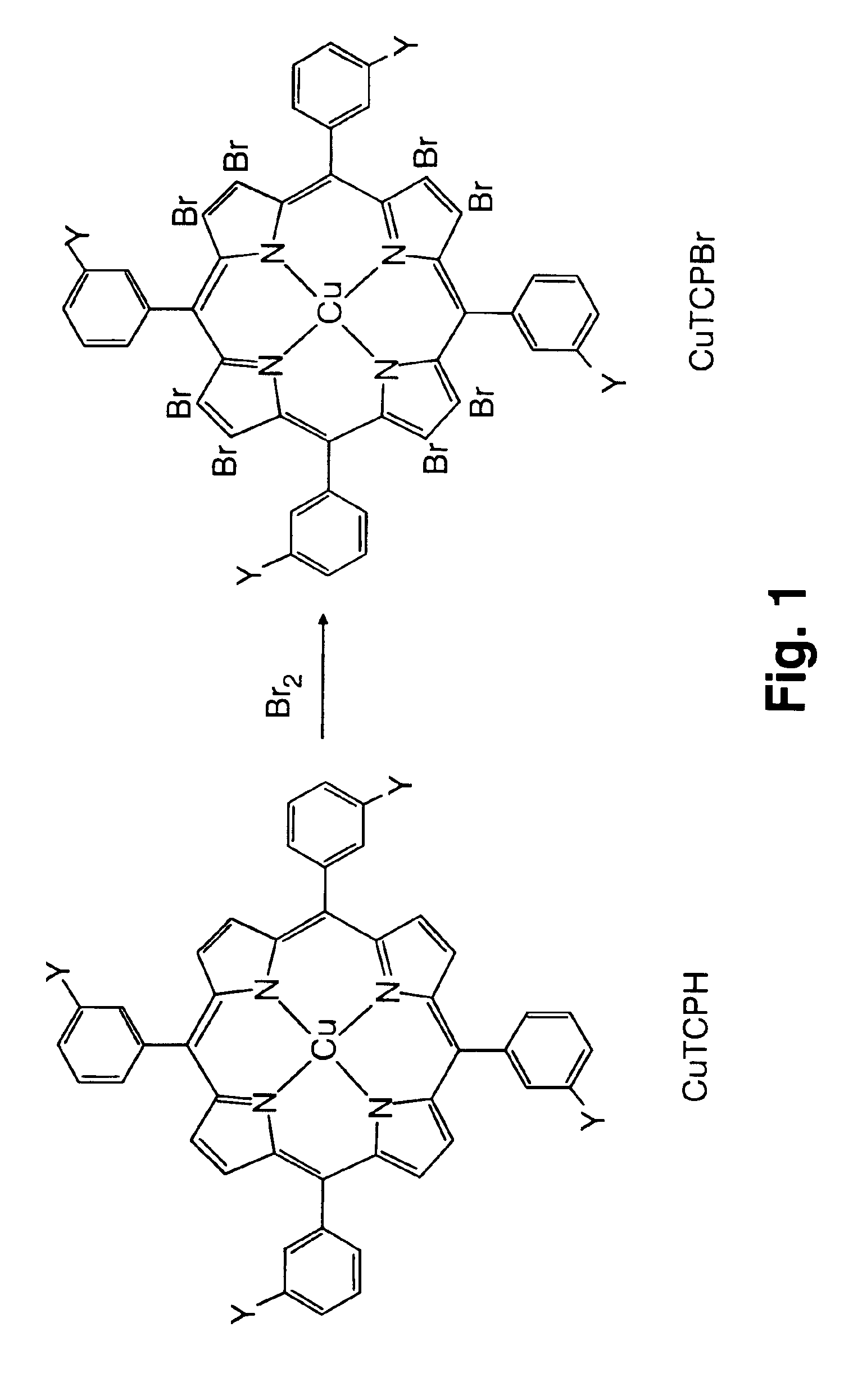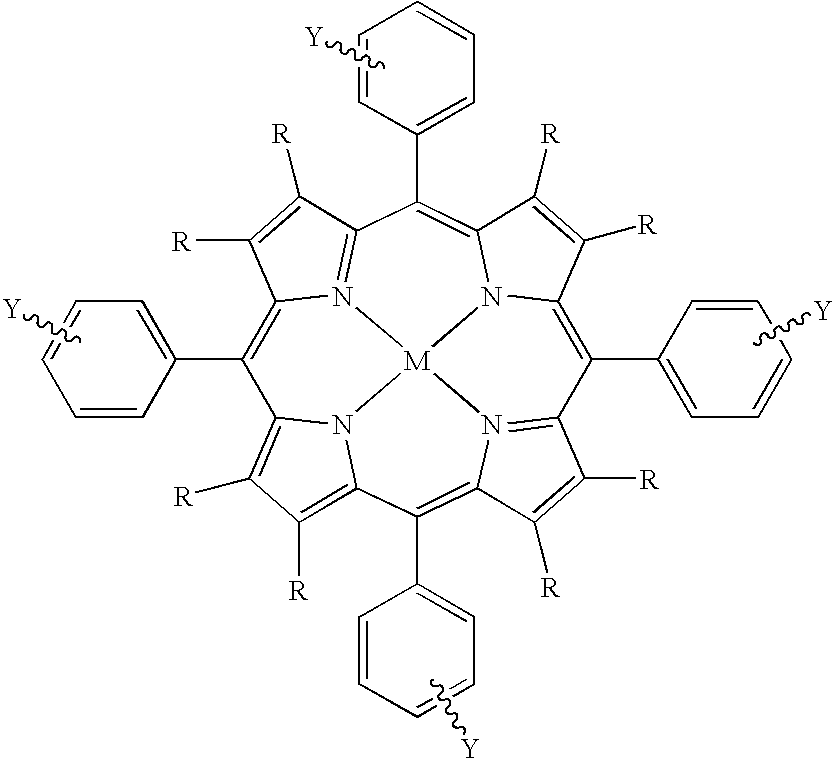Use of novel metalloporphyrins as imageable tumor-targeting agents for radiation therapy
a tumor-targeting agent and metalloporphyrin technology, applied in the direction of drug compositions, group 3/13 element organic compounds, therapy, etc., can solve the problems of limited clinical applicability, tumor cells are rendered incapable of further mitotic activity, tumor dose restriction, etc., and achieve the effect of effective radiosensitizers
- Summary
- Abstract
- Description
- Claims
- Application Information
AI Technical Summary
Benefits of technology
Problems solved by technology
Method used
Image
Examples
example 1
[0040]In this example, CuTCPBr was synthesized from CuTCPH by a bromination procedure. CuTCPH (200 mg, 0.146 mmol) was dissolved in a 1:1 solvent mixture of chloroform and carbon tetrachloride (70 mL). While the mixture was being stirred, bromine (240 μL, 4.6 mmol) in the same solvent mixture 20 mL) was added over a period of 30 min. Pyridine (0.6 mL) in a solvent mixture (15 mL) was added over 30 min and then left overnight at room temperature with constant stirring. The next morning the excess bromine was quenched with an aqueous 20% sodium metabisulfite solution (40 mL). The reaction mixture was worked up by extracting the organic layer and washing 3 times with water. The organic layer was then dried over anhydrous sodium sulfate and the solvents removed in vacuo. The desired product was purified by preparative thin layer chromatography. The yield was 176 mg (0.088 mmol) which is about 60%.
[0041]The compound was characterized by optical absorption and infrared spectroscopies, fas...
example 2
Carcinomas of the Dorsal Thorax
[0042]Five BALB / c mice bearing subcutaneously implanted EMT-6 mammary carcinomas on the dorsal thorax were given a total dose of 186 μg CuTCPBr / g body weight in 6 intraperitoneal (ip) injections over a period of 2 days. Four days after the last injection, mice were euthanized and the average boron concentrations (μg / g wet tissue) were measured for different types of tissue. The results are shown in Table 1.
[0043]
TABLE 1TISSUEμg B / g wet tissuetumor84 ± 15blood0.6 ± 0.2brain0.5 ± 0.1liver272 ± 93
[0044]No toxic effects were noted either physically or behaviorally in the mice during and after porphyrin administration. At necropsy, all tissues appeared normal.
example 3
Human Gliomas on the Dorsal Thorax
[0045]In this example, severe combined immune-deficient (SCID) mice bearing xenografts of U373 human gliomas were given 180 μg CuTCPBr / gbw in a volume of 0.01 mL / gbw / injection over a period of 2 days. Mice were euthanized 2 days after the last injection and the results are shown in Table 2.
[0046]
TABLE 2TISSUEμg B / g wet tissueU373 Tumor81 ± 34Blood1.0 ± 0.3Cerebrum0.1 ± 0.1Ears7.6 ± 2.1Liver356 ± 68
PUM
 Login to View More
Login to View More Abstract
Description
Claims
Application Information
 Login to View More
Login to View More - R&D
- Intellectual Property
- Life Sciences
- Materials
- Tech Scout
- Unparalleled Data Quality
- Higher Quality Content
- 60% Fewer Hallucinations
Browse by: Latest US Patents, China's latest patents, Technical Efficacy Thesaurus, Application Domain, Technology Topic, Popular Technical Reports.
© 2025 PatSnap. All rights reserved.Legal|Privacy policy|Modern Slavery Act Transparency Statement|Sitemap|About US| Contact US: help@patsnap.com



